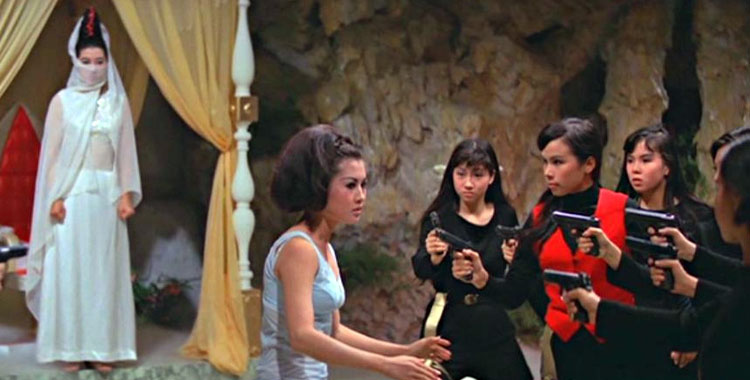Thanks to the release over the past decade of a large portion of the Shaw Brothers catalog on DVD, it should no longer be a secret to anyone who cares that the venerable Hong Kong studio was responsible for far more than the martial arts movies that got imported to the U.S. or horror movies in which people vomit up snakes. Among the more delightful discoveries to come out of this digital mother lode is the handful of James Bond inspired pictures churned out by the studio during the late sixties. Of course, since most of these movies don’t actually feature any spies or espionage (among the exceptions being the Angel With the Iron Fists series, which features Lilly Ho as a lady super spy ranked Agent 009) that influence is expressed mainly in terms of attitude and design.
Films like The Golden Buddha and Summons to Death, for instance, share more in terms of narrative with romantic Hitchcock thrillers like North by Northwest or To Catch a Thief, yet still manage to include space age hidden compounds, knife’s edge haberdashery, consumer objects with lethal hidden functions and, most importantly, a world well stocked with beautiful young women to serve as a sexual supermarket for the films’ well-heeled and limitlessly mobile male protagonists.
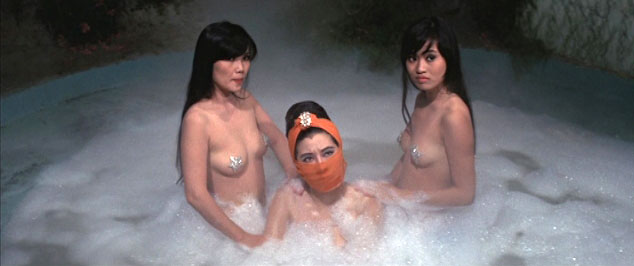
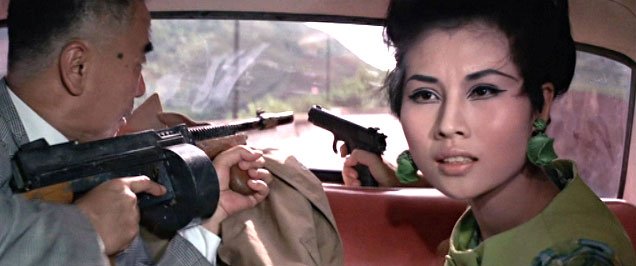
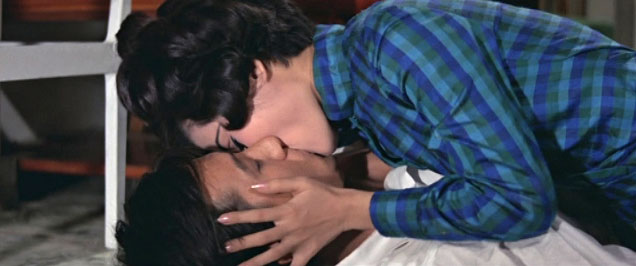
Out of all these films, the 1968 actioner Temptress of a Thousand Faces comes the closest to being an exercise in pure style. Loaded with kink and anarchy–and set to a furious pace that both obliterates and makes redundant the need for coherence–it’s a perfect example of the type of cinema experience that leaves you no choice but to simply let it wash over you. Furthermore, with it’s focus on the heated and sexually charged conflict between two ass-kicking female leads, it’s not only a precursor of the “Girls With Guns” HK films of the early 90s, but a virtual model for the frenetic violence and explosive Sapphic shenanigans of one of the gloriously trashy touchstones of that genre, Clarence Ford’s 1992 Naked Killer. Since splashy style, riotous mod era design and latent lesbianism, all freed from the constraints of coherent storytelling are pretty much my bread and butter, it should come as no surprise that this one is a favorite of mine.

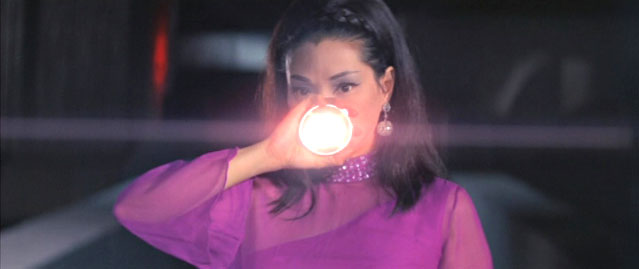
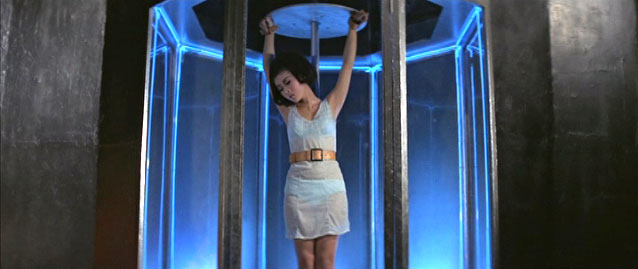
The film centers on the exploits of a shrewdly self promoting mistress of disguise, The Temptress of a Thousand Faces, who has captured the public imagination with a series of daring robberies. Seemingly eager to control her public image–and to perhaps prevent the media from saddling her with a less tongue-tripping appellation (seriously, try shouting that name in alarm the way so many character in this movie do so frequently)–she helpfully leaves a business card at the scene of each crime, and in one case presents a forged check with a signature that, once she has made her getaway, magically transforms to announce her true title before the check itself bursts into flames. Severe-yet-stylish-and-also-super-cute lady police detective Ji Ying (Tina Chin Fei), seeing the Temptress as a threat to the stability of society itself, makes a television appearance to denounce the arch villainess, which appears to somehow raise the Temptress’s ire instantaneously. (In a perfect example of Temptress’s dedication to breathless pacing over narrative logic, a crowd watches Ji Ying’s statement on a stack of televisions displayed in the window of an electronics shop which, for no visible reason, erupts in a massive explosion the second the broadcast ends, an event that is never referred to once we’ve quickly moved on to the next scene.) Later that evening, after receiving delivery of a drugged rose, Ji Ying finds herself making the first of a long series of involuntary visits to the Temptress’s secret lair.

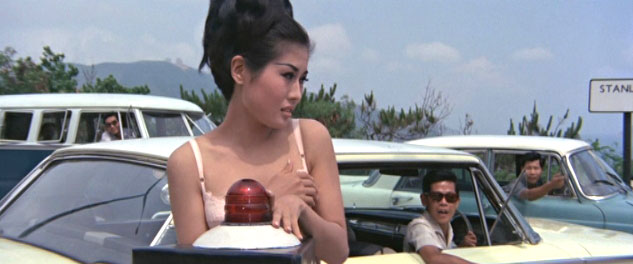

The Temptress’s cavernous subterranean lair, cartoonishly artificial, filled with outlandish props and bathed in lots of fog and Bava-esque colored lighting, is exactly the kind of set that Shaw Studios excelled at during its heyday – and it was undoubtedly reused as the lair of some sinister clan or other in one or more of their later martial arts movies. The Temptress, taking the decorative approach to human resourcing, has populated this spacious piece of super-villainous real estate with a retinue of veiled handmaidens, a small army of masked ninjas, and a number of machine gun toting female guards in black biker shorts. It is here that Ji Ying first finds herself at the mercy of the Temptress–and re-costumed in a flimsy negligee for the occasion. The Temptress first puts her through her paces, giving Ji Ying a chance to display her formidable kung fu in combat with the assorted ninjas and guards. Then it’s time for some torture of a not entirely clear nature, involving spinning around really fast in a big glass chamber with flashing lights and sparks. (It certainly looks uncomfortable, but the agonized grimacing of its subject seems to imply that, beyond looking really cool, it’s potentially lethal.)
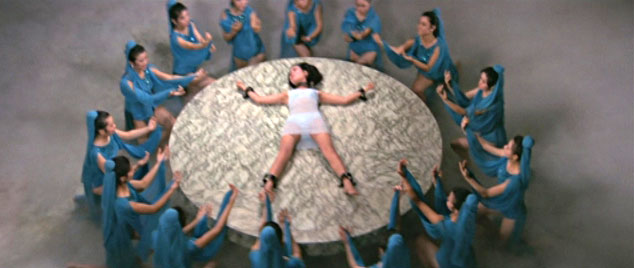
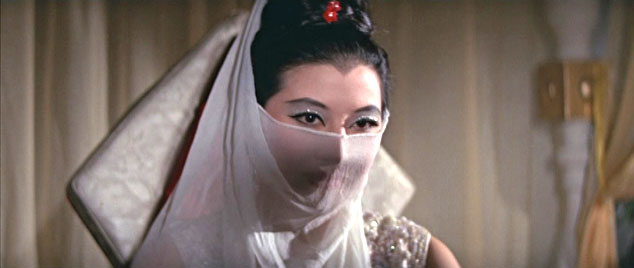
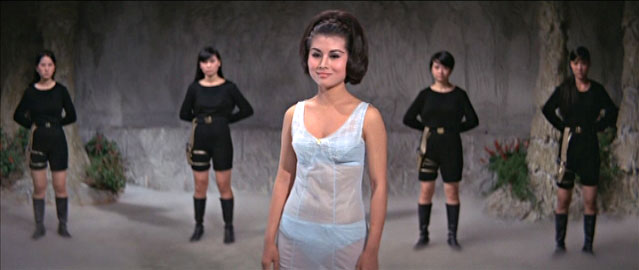
Though it’s elsewhere made clear that the Temptress has no qualms about killing folks who get in her way, she’s content to let Ji Ying off with a warning, leaving open the option to again kidnap her and subject her to further abuse. In fact, as the movie progresses, it seems that the committing of daring robberies has moved down a couple of points on the Temptress’s agenda to be replaced by the mandate to abduct and torment Ji Ying at every possible opportunity. Of course, by this point, it is not just Ji Ying, but also Ji Ying’s lunky hunky boyfriend Yuk Dat who has become the object of the Temptress’s obsession. And with that triangle established, the rest of the movie unfolds like a Jerry Springer catfight absurdly played out on the scale of grand action spectacle. The Temptress caps off her final imprisonment of Ji Ying by forcing her to watch via hidden camera as she, disguised as Ji Ying, seduces and makes love to Yuk Dat in his apartment. Of course, Ji Ying isn’t one to react to such incursions passively and–no sooner than you can say “Oh no she di’int”–has, at the expense of many ninja lives, made a rage-fueled, lingerie-clad jailbreak and is zeroing in on the Temptress with payback in mind.

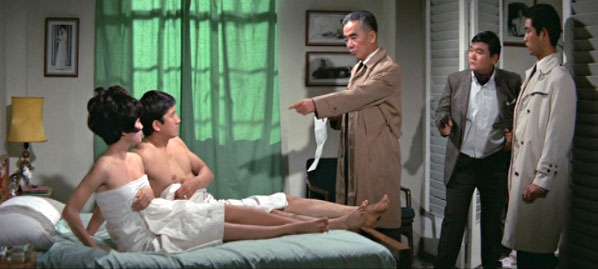

Like the other Shaw Brothers “spy” films mentioned up top, Temptress of a Thousand Faces is not, by nature of its story or setting, an actual spy film, but it has all of the trappings associated with those type of films of its era. In addition to the Temptress’s fortified hidden lair and super-scientific implements of mayhem, we’re treated to exploding compacts, trap doors, leering sexism, narrow escapes through secret passages, exotic girls dancing to surfy lounge music, and even pilfered bits of John Barry’s score from You Only Live Twice (a film that a couple of sequences in Temptress owe a particular debt to). But the sixties spy movie trope that is most central to the film is the method of disguise employed by the titular villain, that great old Mission Impossible gag in which a clunky rubber mask magically assumes the texture and appearance of human skin once patted down onto the face, transforming the wearer, regardless of bone structure or body type, into the exact likeness of one of the other characters. Keep in mind that the Temptress’s disguise as Ji Ying has to bear up to some very intimate scrutiny and you’ll get a sense of just how far this already ridiculous scenario is pushed.
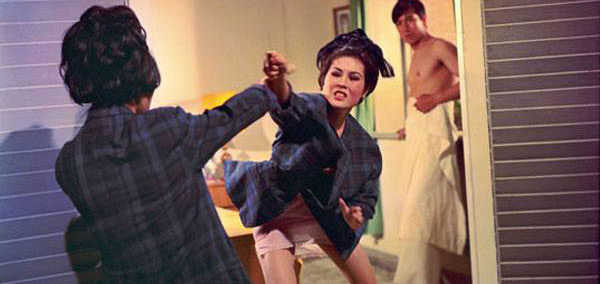
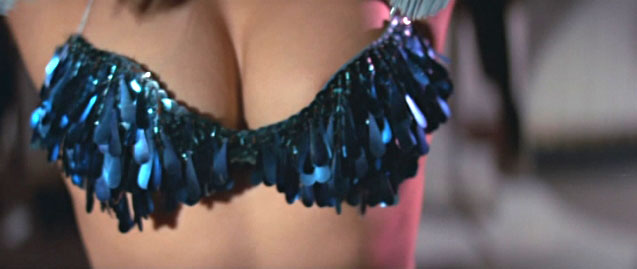
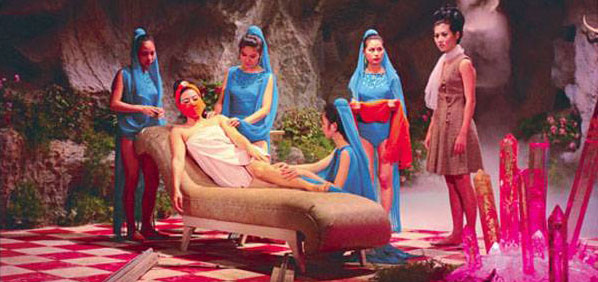
What sets Temptress apart from the other films mentioned, however, is the total extent to which its action is driven by its female characters. Even in the Angel With the Iron Fists films, the female hero is provided with a male co-star to help with the heavy lifting, but not here. The male love interest, Yuk Dat, is squarely placed in the traditional female role of lust object and imperiled victim, and, in a gender-reversed take on the third act business typical of these films, it’s the need for Ji Ying to effect his rescue that sets the climax in motion. Interestingly, Yuk Dat is only able to move the action forward himself by dressing in female drag, as he does when he impersonates the Temptress to clear Ji Ying of a crime she’s been framed for.

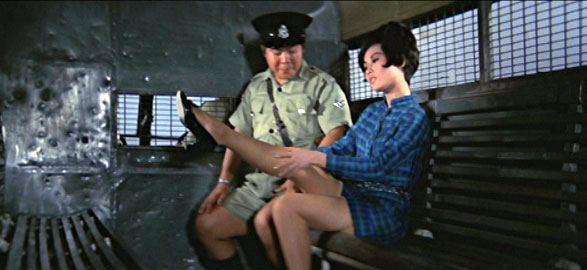
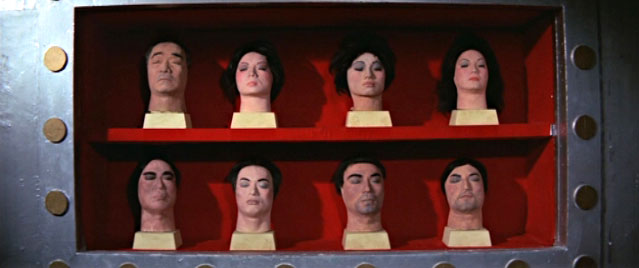
Temptress was directed by Chang-hwa Jeong, who is probably best know for directing King Boxer, aka Five Fingers of Death. Not surprisingly, it’s a solid action film, loaded from start to finish with furious, multi-person fights and fast paced chases. Handily fulfilling both of the movie’s primary objectives, Jeong films these sequences in an exciting manner while always managing to shoot the mini-skirted female participants from an angle designed to please the panty fetishists in the audience. He also shows a real eye for strikingly stylized compositions and lens-popping color, making Temptress a pop art cinematic comic book that is, if not in the same league of Danger: Diabolik, at least in the same ball park.
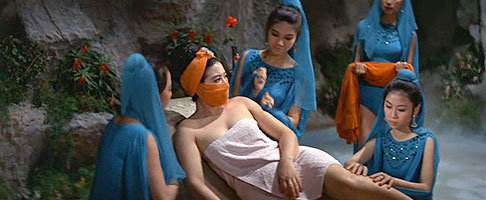
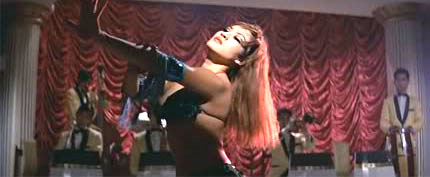

That Temptress can contain the clashing combination of slick style and mild sleaze referred to above is not that mean of a feat. Like a lot of Hong Kong cinema, it has it’s share of conflicting tones (including some extremely broad slapstick), but manages to blend these better than most, glossing over its inconsistencies by way of sheer velocity. When it grinds to a halt at the end with an instance of painfully unfunny sexual comedy, you really see this made plain. The moment jars not because it is the film’s most outrageous (it probably isn’t), but because it occurs at a moment when the film has finally stopped to take a breath, thus giving you the opportunity to savor just how stank it is. That aside, Temptress of a Thousand Faces is a crazy, shiny object that stands out for me from an era and genre filled with crazy, shiny objects–one that, over the years, I have been pleased to repeatedly take from its box and twirl between my fingers. Seek it out and enjoy.
Release year: 1969 | Country: Hong Kong | Starring: Tina Chin Fei, Chan Leung, Pat Ting Hung, Lau Leung-Wa, Yeung Chi-Hing, Lau Kwan, Fan Mei-Sheng, Ou-Yang Sha-Fei, Yip Bo-Kam, Carrie Ku Mei, Kam Man | Screenplay: Song Jin | Director: Jeng Cheong-Woh | Cinematography: Jin Yi-Xiong | Producer: Runme Shaw
